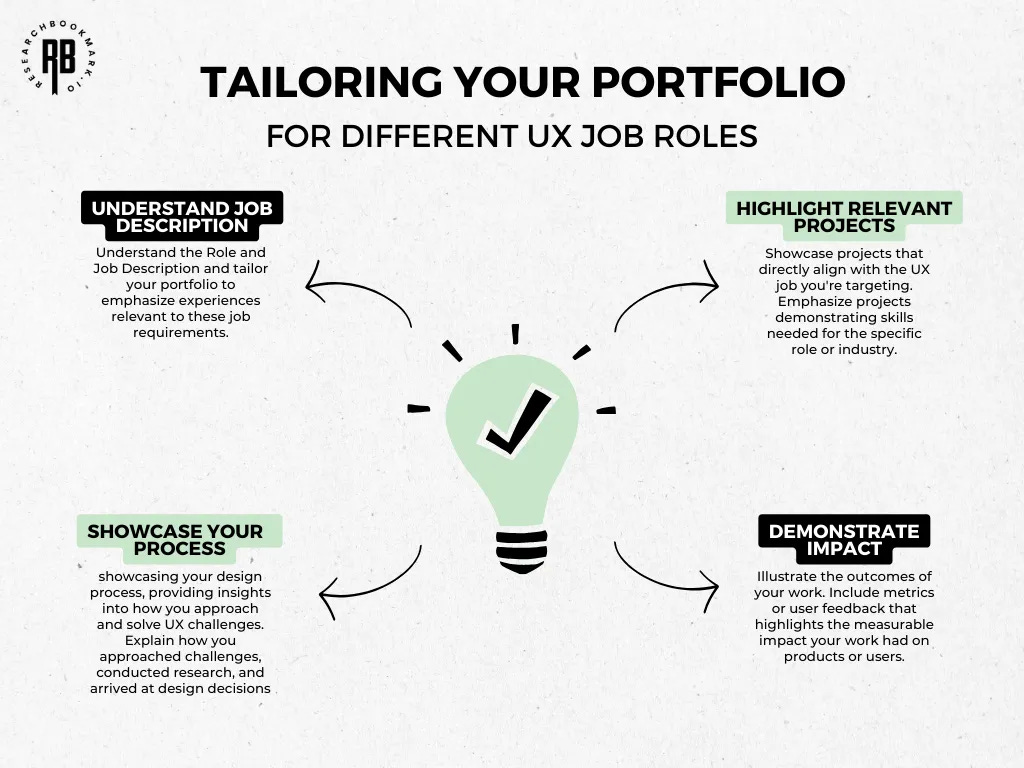How to Land a UX Role in a Competitive Market
Is UX in Demand in 2025?
Finding a UX job can be challenging, especially with so many talented professionals competing for the same opportunities. You might have experienced scrolling through job boards, questioning if your portfolio is sufficient, or wondering how to differentiate yourself.
The good news is that the demand for UX professionals continues to grow. Companies are prioritizing user experience more than ever, but they seek candidates who offer more than just technical skills. They want problem-solvers, storytellers, and individuals who can make a significant impact.
Today, we’ll explore strategies, tools, and insights to help you get noticed and secure your next UX role.
Today’s Highlights
Key Insight: Getting Hired in UX
Market Insight: Where the UX Industry is Heading in 2025
The Current State of the UX Job Market
Why Your Portfolio Matters More Than Your Resume
How to Showcase Impact in Your Work
Tips: How to Stand Out Without Overcomplicating Things
Workshop: Crafting unforgettable UX case studies that get you hired
Resource Corner: Tools and Reads for Career Growth
Feature Spotlight: Join Us at UXCon25
Tool of the Week: UXfolio – Build a Stunning Portfolio
Key Insight: Getting Hired in UX
Securing a UX position isn't solely about possessing the right skills. It's about demonstrating how you solve problems and deliver results.
Market Insights: Where the UX Industry is Heading in 2025
AI and UX Are Merging
With advancements in AI, designers who can integrate these technologies into user experiences will be highly sought after. (Valido)Freelancing Is Becoming More Common
There's a growing trend towards freelance UX work, providing opportunities for diverse projects and flexible schedules. (WhizzBridge)Salaries Are Increasing
UX salaries are on the rise, with competitive compensation reflecting the value of user-centered design. (Springboard)
The Current State of the UX Job Market
The UX industry is expanding, but it's also evolving. Here's what you should know:
Demand Is Rising
The global UI/UX market is projected to grow from USD 2.20 billion in 2025 to USD 9.28 billion by 2030, reflecting a compound annual growth rate (CAGR) of 33.35%. This significant expansion underscores the increasing importance of user-centered design in developing effective digital products. (MordorIntelligence)Remote Opportunities Are Booming
More companies are open to hiring remote UX professionals, offering flexibility and access to a broader talent pool. (UX Design Institute)Specialized Skills Are in Demand
There's a rising need for UX researchers, accessibility specialists, and designers proficient in AI integration. (UIUXTrend)
Why Your Portfolio Matters More Than Your Resume
Think of your portfolio as your UX superpower. It's the first thing recruiters and hiring managers want to see, and it tells them more about your capabilities than a list of job titles ever could.
Here's how to build a portfolio that stands out:
Show your process: Employers want to see how you think, not just the final product. Include sketches, wireframes, and insights from usability testing.
Focus on impact: Use metrics to demonstrate the results of your work. For example, "Improved user engagement by 15% after redesigning the checkout flow."
Keep it simple: A cluttered portfolio won't do you any favors. Highlight 3–5 of your best projects with clear, concise case studies.
How to Showcase Impact in Your Work
Whenever possible, tie your work to measurable outcomes:
Reduced onboarding time by 30% through streamlined navigation.
Increased app retention rates by 12% by improving the signup flow.
Boosted e-commerce conversions by 20% with a simplified checkout process.
Practical Tips: Standing Out Without Overcomplicating Things
Tailor Your Portfolio for Each Role
Customize your case studies to align with the specific role and company.Network Authentically
Referrals can increase your chances of landing an interview by 4 times (LinkedIn). Connect with UX professionals at your target companies, attend local meetups, and participate in online design communities like UX Mastery or ADPList.Ace the UX Interview
Interviewing for UX roles can be nerve-wracking, but preparation is key:
Know your portfolio inside out: Be ready to explain your design decisions and the impact of your work.
Practice common questions: For example, “Tell me about a time you handled design feedback” or “How do you approach solving a UX problem?
Keep Learning: Stay updated on UX trends and tools through courses and resources available online.
Upcoming workshop:
Your case study can be the difference between getting noticed—or overlooked.
Hiring managers and clients don’t just want to see what you’ve done; they want to understand how you think, solve problems, and deliver impact. This workshop is your step-by-step guide to crafting case studies that do just that.
Through actionable tips, real-world examples, and hands-on exercises, you’ll transform your UX work into case studies that showcase your skills and results.
Resource Corner: Tools and Reads for Career Growth
Book: The UX Careers Handbook by Cory Lebson – Your go-to guide for navigating a UX career.
Portfolio creation sites like UXfolio and Cofolio, a database of UX portfolios and case studies from design interns who worked in Fortune 500 companies.
Article: Portfolios for UX Researchers: Top 10 Recommendations by Nielsen Norman Group – A must-read for building a strong portfolio.
Feature Spotlight: Join Us at UXCon25
Looking to supercharge your UX career? UXCon25 is your chance to connect with industry leaders, discover cutting-edge trends, and learn strategies to stand out in 2025.
🎟️ Early-bird tickets are available now—don’t miss out!
Tool of the Week: UXfolio – Build a Stunning Portfolio
Here’s what UXfolio can do for you:
Create professional case studies with ease.
Access templates tailored for UX professionals.
Share your portfolio online with a clean, modern design.
Final Note | Your Work Speaks Volumes
The UX job market is competitive, but every application is a chance to showcase your value. A strong portfolio, a clear narrative, and a results-driven approach can make all the difference.
Remember: You’re not just applying for a job—you’re building your career.






